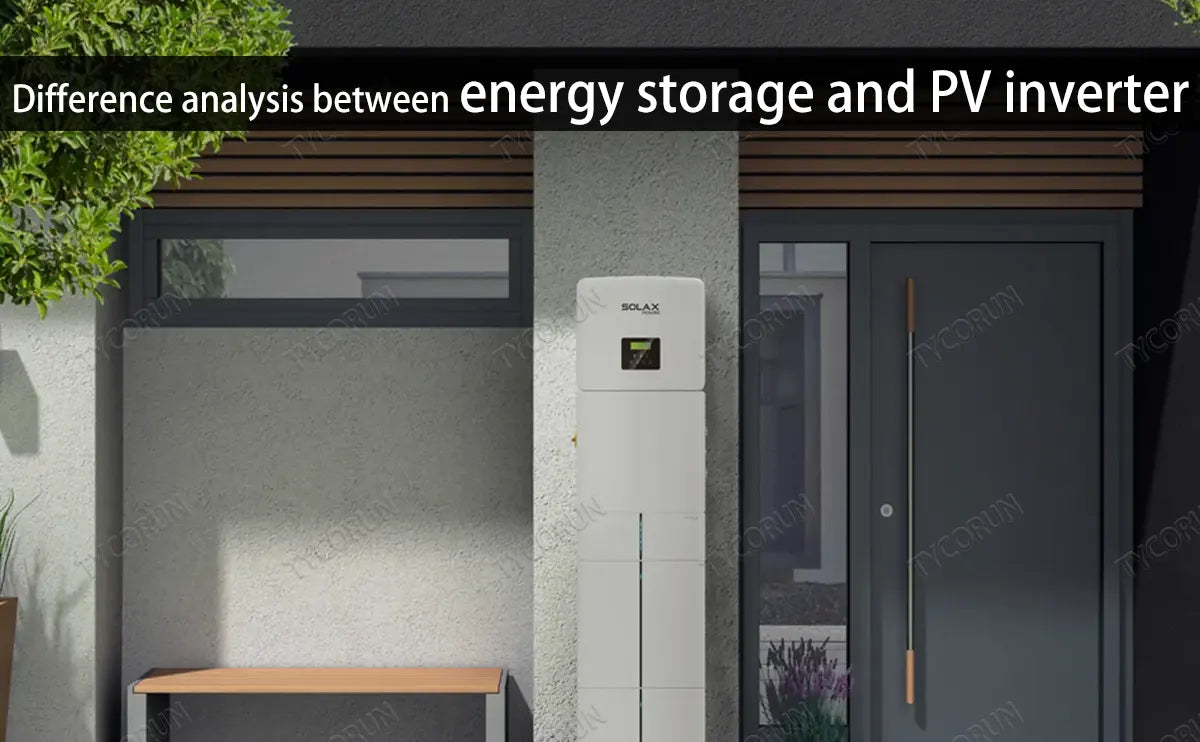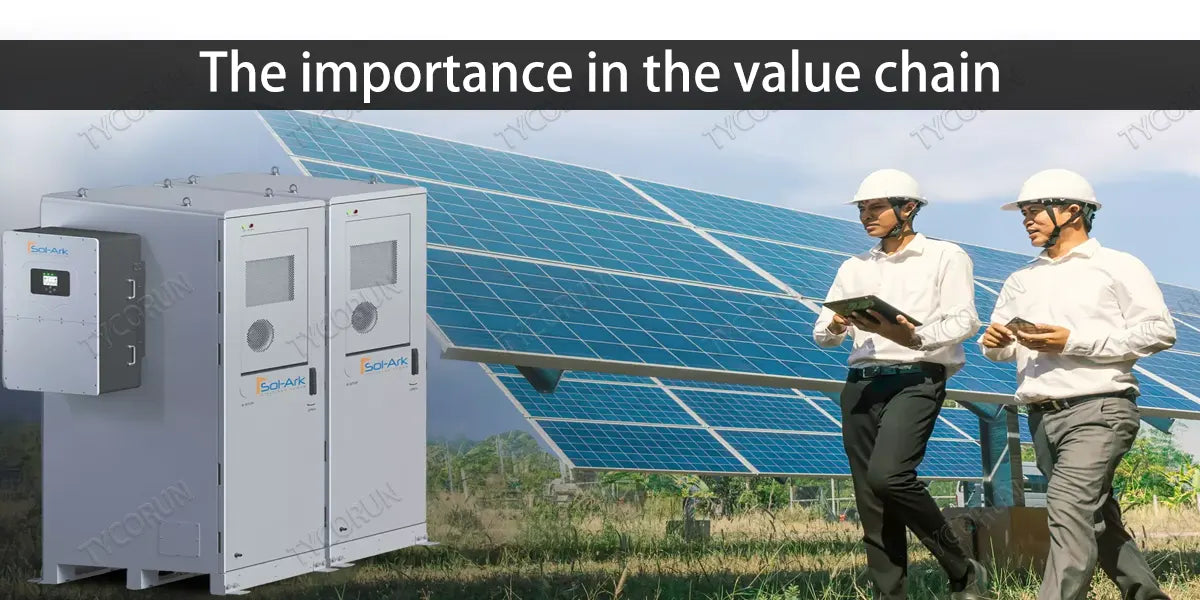
Main content:
As the core component of photovoltaic power generation and energy storage system, the inverter is very important photovoltaic module. Many people see them with the same name and field of use, and think that these two are the same type of products, but they are not.
Photovoltaic and energy storage inverters are different in practical applications such as functions, utilization rates, and revenues.
1. What is an energy storage inverter
Energy storage converter (PCS), also known as bidirectional energy storage inverter, is the core component of the two-way flow of electric energy between the energy storage system and the power grid. It is used to control the charging and discharging process of the 12v 100ah lithium ion batteries, and to convert AC and DC. In the absence of a power grid, it can supply power directly to AC loads.
2. Basic operating principle
According to the application scenario and capacity, energy storage converters can be divided into photovoltaic energy storage hybrids, small power, medium power, centralized energy storage converters, etc.
Hybrid photovoltaic energy storage and low-power energy storage converters are used in residential, industrial and commercial scenarios. Photovoltaic power generation can be used for local loads first, and excess energy can be stored in the battery, which can optionally be integrated into the grid if there is still a surplus of electrical energy.
Medium-power, centralized energy storage converters can achieve higher output power, and are used in industrial and commercial power stations, large-scale power grids and other scenarios to achieve functions such as peak shaving, peak shaving, or frequency regulation.
3. The importance in the value chain
The electrochemical energy storage system is generally composed of four core parts: battery, energy management system (EMS), energy storage inverter (PCS), and battery management system (BMS).

The energy storage inverter can control the charging and discharging process of the energy storage battery pack, and perform AC and DC conversion, which plays a very important role in the industrial chain.
- Upstream: Supplier of battery raw materials and electronic components.
- Midstream: energy storage system integrators and system installers.
- Downstream applications: wind and solar power stations, power grid systems, residential/industrial and commercial, communications operators, data centers and other end users.
4. Introduction of PV inverters
Photovoltaic inverter is an inverter dedicated to the field of solar photovoltaic power generation. The biggest function is to convert the direct current generated by solar cells into alternating current that can be directly integrated into the grid and load through power electronic conversion technology.
As an interface device between photovoltaic cells and the power grid, the photovoltaic inverter converts the electrical energy of photovoltaic cells into alternating current energy and transmits it to the power grid. It plays a vital role in the grid-connected photovoltaic power generation system.
With the popularization of BIPV, in order to maximize the conversion efficiency of solar energy and take into account the appearance of the building, the form of inverter is gradually diversified. At present, the common solar inverter methods are: centralized inverter, string inverter, multi-string inverter and module inverter (solar microinverter).
5. Similarities and differences between the two
Photovoltaic inverters can only generate electricity during the day, and power generation is affected by the weather, which has problems such as unpredictability.

The energy storage converter can solve these dilemmas perfectly, and when the load is low, the output power will be stored in the battery. The stored energy is released during peak loads, reducing strain on the grid. When the power grid fails, switch to off-grid mode to continue the power supply.
The biggest difference: the demand for 3000w inverter in energy storage scenarios is more complex than in PV grid-connected scenarios. In addition to DC-to-AC conversion, it is also necessary to have functions such as AC to DC conversion and fast switching between on-grid and off-grid.
At the same time, the energy storage PCS is also a bidirectional converter, with energy control in both charging and discharging directions. In other words, energy storage inverters have higher technical barriers.
Other differences are reflected in the following three points:
- The self-consumption rate of traditional photovoltaic inverters is only 20%, while the self-consumption rate of energy storage converters is as high as 80%.
- In the event of a mains failure, the inverter connected to the PV grid is paralyzed, but the energy storage converter can still work efficiently.
- In the context of the continuous reduction of subsidies for grid-connected power generation, the income of energy storage converters is higher than that of photovoltaic inverters.
6. Common problems in the maintenance of inverter
When the appliance is not working, the converter indicator does not light up.

First of all, you need to find out why. Usually this is caused by the positive and negative poles of the battery, and the wiring is not tightened. The solutions are: check the battery, replace it according to the specific situation, check the battery cable, the converter may be damaged, you can replace the converter or send it to the electrical equipment manufacturer for maintenance. Check the cable and connection in, and tighten the wiring.
The inverter power converter is not working, and the converter red indicator light is on.
The rated power of the appliance exceeds the nominal power of the converter, causing overload shutdown. When this happens, a good solution is to test an electrical device with less power than the nominal power of the converter.
The electrical power of the inverter power supply is less than the nominal power of the converter, and the peak power is too high, which will cause overload shutdown. The peak power of the appliance exceeds the peak power of the converter, and the appliance with the same peak power as the converter is used.
Poor ventilation causes excessive temperature and shutdown.
Turn off the converter, cool down for 15 minutes, clean the fan and items around the inverter power converter, place the inverter power converter in a cool place, reduce the load as required, and restart.
7. Conclusion
Therefore, energy storage inverters are mainly used for energy regulation and management of energy storage systems, while photovoltaic inverters are mainly used to convert solar photovoltaic power into AC power and connect to the power grid.
Although they differ in function, in some applications, energy storage inverters and photovoltaic inverters can be used in combination to enable synergy between energy storage and grid power supply in solar power systems. This integrated application can improve energy efficiency, balance power demand, and provide more reliable and sustainable energy solutions.
Related articles: energy storage PCS companies, off grid solar batteries, top 10 solar inverters
















